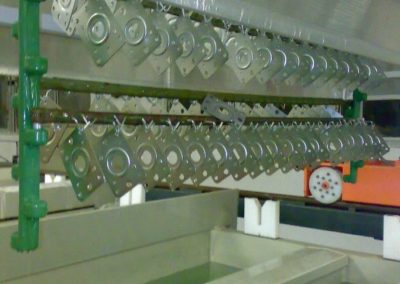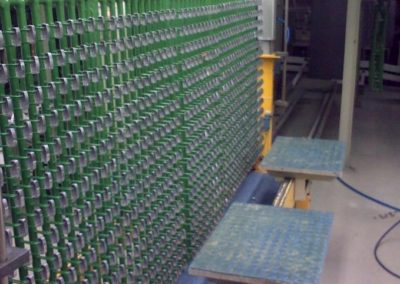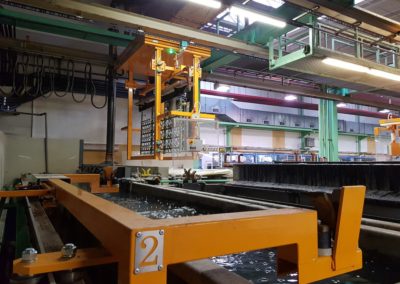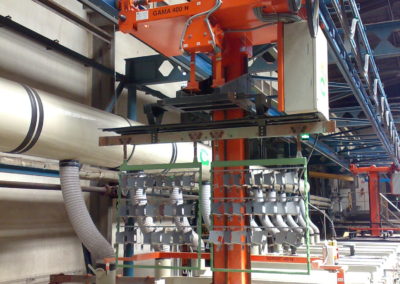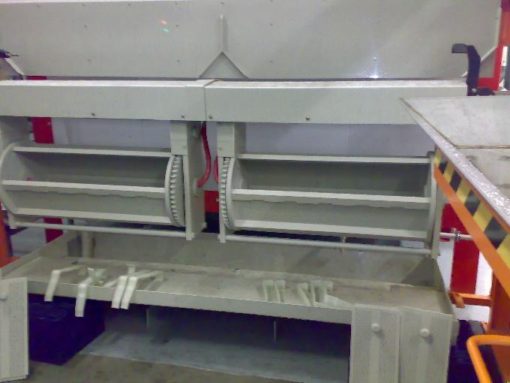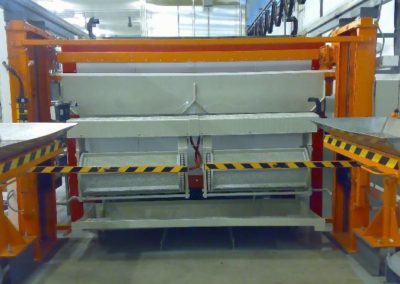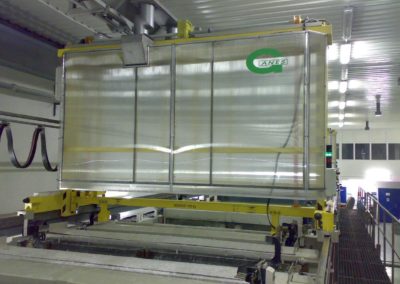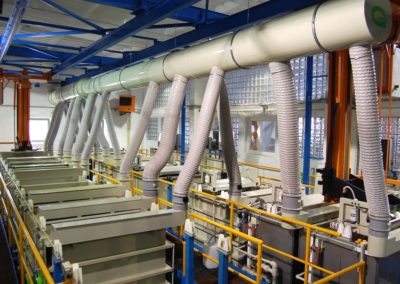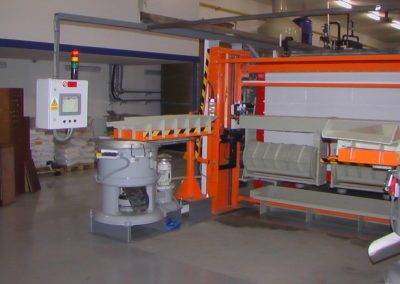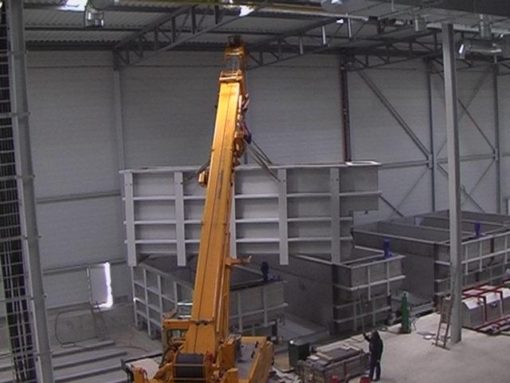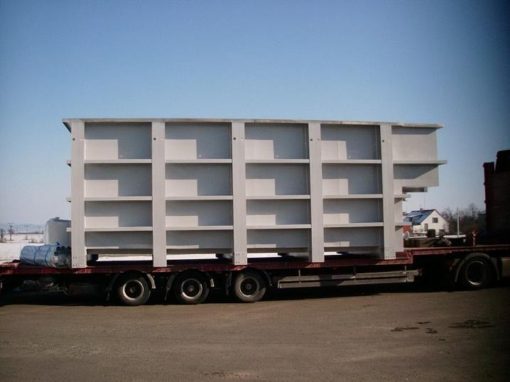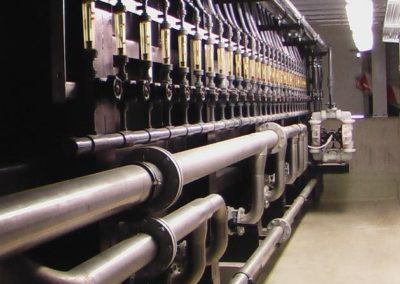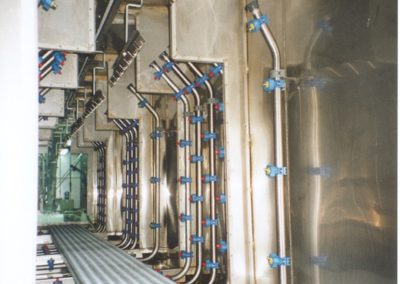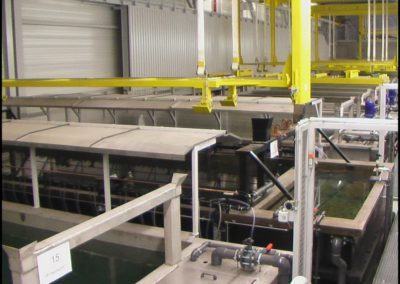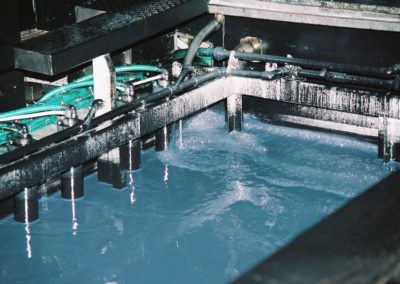Surface treatment of metals
Galvanic lines
For high-performance equipment, depending on the destination, customer requirements (level of automation, applied technology, etc.) and their spatial possibilities, solutions are proposed, to which the design of individual equipment and its assembly into technological units subsequently correspond.
Critical components that make up the machinery of the technology lines are designed to allow a high degree of automation (Siemens system), optimizing energy and chemical substances consumption. Adaptation of the technological equipment, handling on the input and output sections from small batches to large batch volumes common in the automotive industry is a matter of design and implementation.
Main technological components of galvanic lines
- input and output sections for hinged and bulk goods
- tank machinery including accessories for heating, cooling or clarifying registers, exhaust frames, supporting and current-conducting beds, current-conducting fittings and injector mixing
- GAMA manipulators (conveyors) including tracks
- electric or manual transport trucks
- drying equipment (tank, centrifugal)
- anode material dissolution station
- storage and regeneration tanks
- technological process control system
- plating drums
Galvastac stationary plating equipment is also designed for small series production with persistent manual transfer of metallized parts.
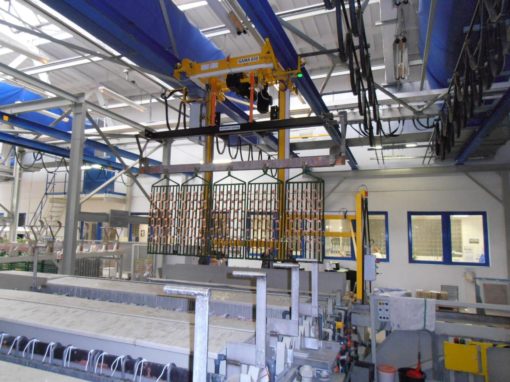
Galvanic rack lines
Rack lines are used for parts where their character or chosen technology (chrome plating, anodizing etc.) requires it. Their machinery part from the tank equipment through the transport of goods in the line to hanging up parts on transportable rods is then provided by our company based on specific requirements of users. Components of renowned manufacturers with wide service representation are used not only in the Czech Republic, but also in places of foreign deliveries, are used for individual elements.
We supply suspension lines for:
- zinc plating
- Zn-Ni
- copper plating
- nickel plating
- tinning
- chemical and electrochemical polishing
- chromium plating
- anodizing
- phosphating
- degreasing
- pickling
- passivation
- blackening, alkaline blackening of steel, etc.
Galvanic drum lines
Components which are intended for commonly used standard electrochemical surface treatments such as zinc plating, nickel plating, cadmium plating, silver plating, etc. and which, by their geometrical, mass or other properties, require this method of execution.
We supply drum lines for:
- zinc plating
- Zn-Ni
- copper plating
- nickel plating
- tinning
- phosphating
- degreasing
- pickling
- passivation
